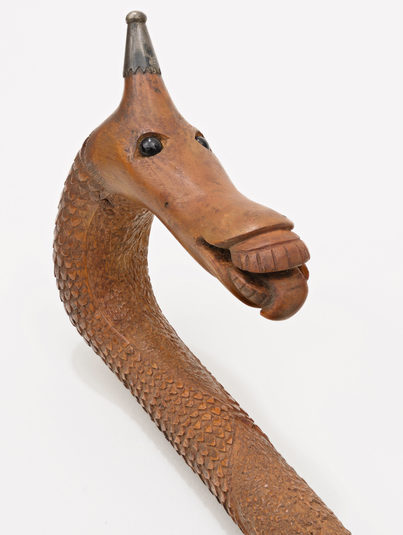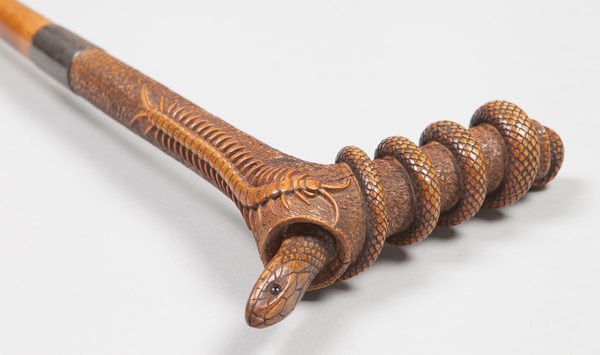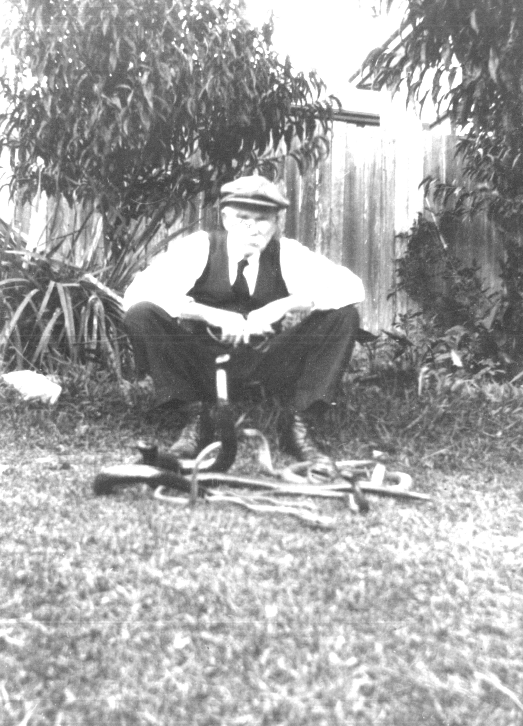
Mythical creatures, grotesque faces, writhing snakes, horse’s hooves, glinting shovels and pickaxes… all things not usually seen on walking sticks. However, the carvings of Robert Read display the potential creativity and whimsy of this part utilitarian, part fashionable item.

Robert Read migrated from Pettigo, County Donegal, Ireland to Australia aboard the ‘Spitfire’ in 1863, aged around 12 years old. He travelled with his father George, mother Jane, and 5 of his siblings. He had various vocations over the years, including bootmaking, prospecting, photography, signwriting, watchmaking, barbering and painting, as well as being an alderman of the first Municipal Council of Grenfell, New South Wales, and proprietor of ‘Robert Read & Co’ general store in Wellington, New South Wales.

After retiring from his general store, Read moved to Manly, New South Wales and took up carving – first decorative birds after he was given a pattern by a friend, then fishing rods and walking sticks. Read was renowned for his carvings and his walking sticks were well regarded, once described by Admiral Sir Dudley Rawson Stratford de Chair, Governor of New South Wales from 1924-1930, as ‘the most novel in the world’ after seeing an example in Leura in the Blue Mountains.

On 6 September 1938, Robert Read presented a collection of his carved walking sticks in Australian woods to the Technological Museum, the then name of the Museum of Applied Arts and Sciences. It was hoped that these walking sticks would illustrate the beauty and quality of Australian timbers over imported species. By 1939, twenty of the walking sticks were on display in two table cases at the Museum in Ultimo and the walking sticks and Read’s donation were covered in the press around Australia.
Mr T.C. Roughley, Acting Curator of the Technological Museum, said yesterday that the Museum had acquired new exhibits, consisting of a collection of 20 walking sticks carved in an interesting series of designs. Six of the sticks were life-like in their representation and accurate in detail. Others had handles carved to represent horses’ hoofs, grotesque heads and goannas. All the sticks were carved from Australian woods collected in the Wellington district of New South Wales. They were the product of a lifetime hobby of Mr Robert Read, of Manly, who had presented them to the Museum.
‘Carved walking sticks at Museum’, Sydney Morning Herald, 16 February 1939, p8.
Robert Read’s ‘unicorn’ walking stick will be on display in Australian Men’s Style, from 2 May until 14 October 2018. Touching on aspects of men’s clothing and accessories over the past 200 years, this display highlights a selection of objects primarily from the MAAS collection to accompany the exhibition Reigning Men: Fashion in Menswear, 1715–2015.

Alysha Buss, Assistant Curator
May 2018